
Vorticism was a London-based modernist art movement formed in 1914 by the writer and artist Wyndham Lewis. The movement was partially inspired by Cubism and was introduced to the public by means of the publication of the Vorticist manifesto in Blast magazine. Familiar forms of representational art were rejected in favour of a geometric style that tended towards a hard-edged abstraction. Lewis proved unable to harness the talents of his disparate group of avant-garde artists; however, for a brief period Vorticism proved to be an exciting intervention and an artistic riposte to Marinetti's Futurism and the post-impressionism of Roger Fry's Omega Workshops.
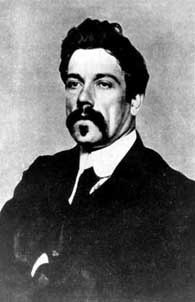
Edmund John Millington Synge was an Irish playwright, poet, writer, collector of folklore, and a key figure in the Irish Literary Revival. His best known play The Playboy of the Western World was poorly received, due to its bleak ending, depiction of Irish peasants, and idealisation of parricide, leading to hostile audience reactions and riots in Dublin during its opening run at the Abbey Theatre, Dublin, which he had co-founded with W. B. Yeats and Lady Gregory. His other major works include In the Shadow of the Glen (1903), Riders to the Sea (1904), The Well of the Saints (1905), and The Tinker's Wedding (1909).

Matthew Gregory Lewis was an English novelist and dramatist, whose writings are often classified as "Gothic horror". He was frequently referred to as "Monk" Lewis, because of the success of his 1796 Gothic novel The Monk. He also worked as a diplomat, politician and an estate owner in Jamaica.
William Wilkins was an English architect, classical scholar and archaeologist. He designed the National Gallery and University College London, and buildings for several Cambridge colleges.

The History Boys is a play by British playwright Alan Bennett. The play premiered at the Royal National Theatre in London on 18 May 2004. Its Broadway debut was on 23 April 2006 at the Broadhurst Theatre where 185 performances were staged before it closed on 1 October 2006.

The Potting Shed is a 1957 play by Graham Greene in three acts. The psychological drama centers on a secret held by the Callifer family for nearly thirty years.
The Seafarer is a 2006 play by Irish playwright Conor McPherson. It is set on Christmas Eve in Baldoyle, a coastal suburb north of Dublin city. The play centers on James "Sharky" Harkin, an alcoholic who has recently returned to live with his blind, aging brother, Richard Harkin. As Sharky attempts to stay off the bottle during the holidays, he contends with the hard-drinking, irascible Richard and his own haunted conscience. It was nominated for multiple Tony Awards as well as the Olivier Award and Evening Standard Award for Best Play.
The Castle Spectre is a 1797 dramatic romance in five acts by Matthew "Monk" Lewis. It is a Gothic drama set in medieval Conwy, Wales.
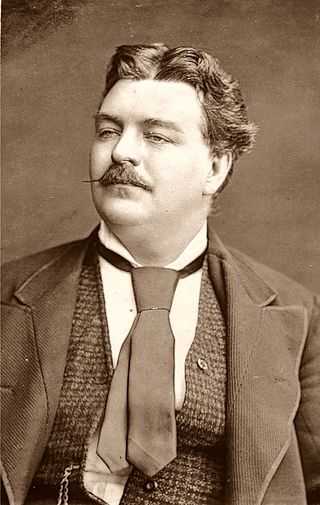
William Rignold (1836–1904) was an English actor. Rignold began acting as a teenager, together with his brother George.
Richard Daly (1758–1813) was an Irish actor and theatrical manager who, between 1786 and 1797, held the Royal patent for staging dramatic productions in Dublin and became such a dominant figure in Irish theatre that he was referred to as "King Daly".
Edmund John Eyre (1767–1816), was an English actor and dramatist.

Francis Martin "Fra" Fee is an Irish actor and singer. He is known for portraying Courfeyrac in Tom Hooper's film adaptation of Les Misérables. He portrayed the role of Michael Carney in Jez Butterworth's The Ferryman at the Royal Court Theatre, West End and Broadway directed by Sam Mendes, for which he won the 2018 WhatsOnStage Award for Best Supporting Actor in a Play. In 2021 he played Kazi in the Disney+ series Hawkeye, set in the Marvel Cinematic Universe.
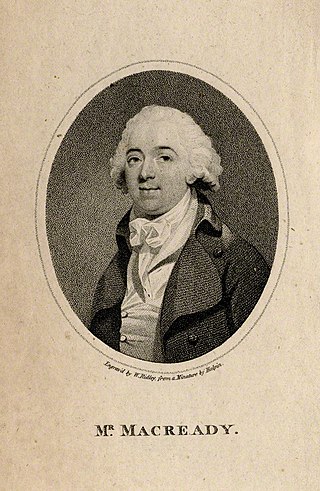
William Macready the Elder (1755–1829) was an Irish actor-manager.
John Anderson Castello was a Guyanese child actor and journalist who established his reputation in Jamaica, whither he moved as a teenager. Following Master Betty, known as "the Young Roscius", Castello was called "the West Indian Roscius". He performed in Spanish Town in October 1816 at the age of thirteen. Castello remained popular with Jamaican theatre-goers until 1818, when he reached puberty and his voice broke.
Henrietta Amelia Leeson was an English actress of the 18th-century. Known as Mrs Lewis after her marriage to the actor William Thomas Lewis In 1780, she appeared regularly with him at the Theatre Royal, Drury Lane. She made over 100 appearances on the London stage between 1775 and 1791.
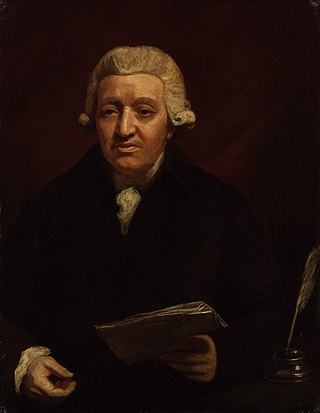
Capel Street Theatre was an 18th-century theatre located on Capel Street in Dublin, Ireland.

The Beggar's Wedding is a 1729 ballad opera by the Irish writer Charles Coffey. Part of a boom in ballad operas following the success of John Gay's The Beggar's Opera, it originally premiered at the Smock Alley Theatre in Dublin in March 1729 before appearing in London at the Haymarket Theatre on 29 May 1729 The original Dublin cast included Richard Elrington.
Laurence Clinch (c1740-1812) was an Irish actor, familiarly known as Larry, and accomplished in both tragedy and comedy. The popular farce St Patrick's Day was written and performed to showcase his particular talent.
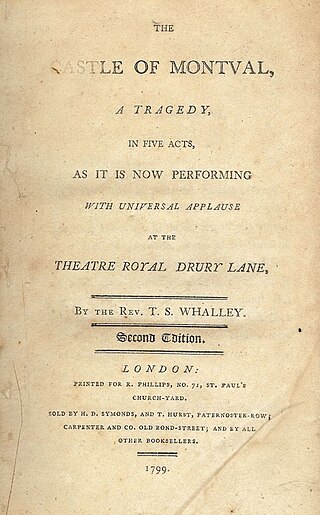
The Castle of Montval is a tragedy by the British writer Thomas Sedgwick Whalley. It was first published in 1781, but wasn't staged in London's West End until 23 April 1799 when it appeared at the Theatre Royal, Drury Lane where it succeeded The East Indian by Matthew Lewis. The Drury Lane cast included Sarah Siddons as Countess of Montval, John Philip Kemble as the Old Count, James Aickin as Count of Colmar, Charles Holland as Count of Montval, Charles Kemble as Marquis of Vaublane, William Barrymore as Lapont, John Hayman Packer as Blaise, Jane Powell as Matilda and Elizabeth Heard as Teresa. It was part of the tend of Gothic plays popular during the era.

The Curfew is a historical tragedy by the British writer John Tobin which was first published in 1807, three years after the author's death. It was staged by Richard Brinsley Sheridan at the Theatre Royal, Drury Lane in London premiering on 19 February 1807. The cast included William Barrymore as Hugh de Tracy, John Bannister as Robert, Henry Siddons as Bertrand, William Penley as Walter, Edmund John Eyre as Philip, Jane Powell as Matilda and Maria Duncan as Florence. It appeared at the Crow Street Theatre in Dublin on 1 April the same year. It is set during the Norman era.












